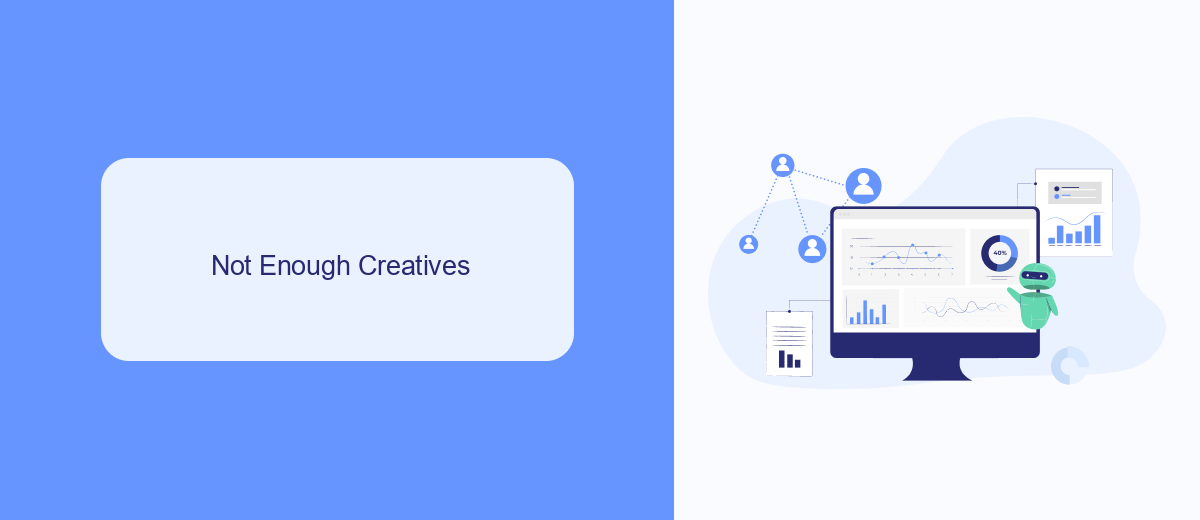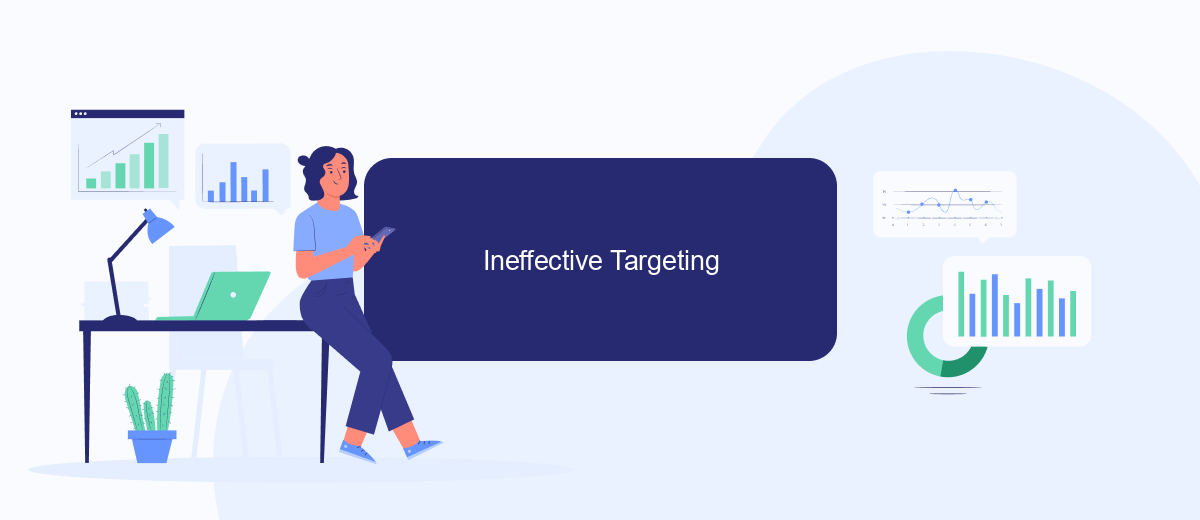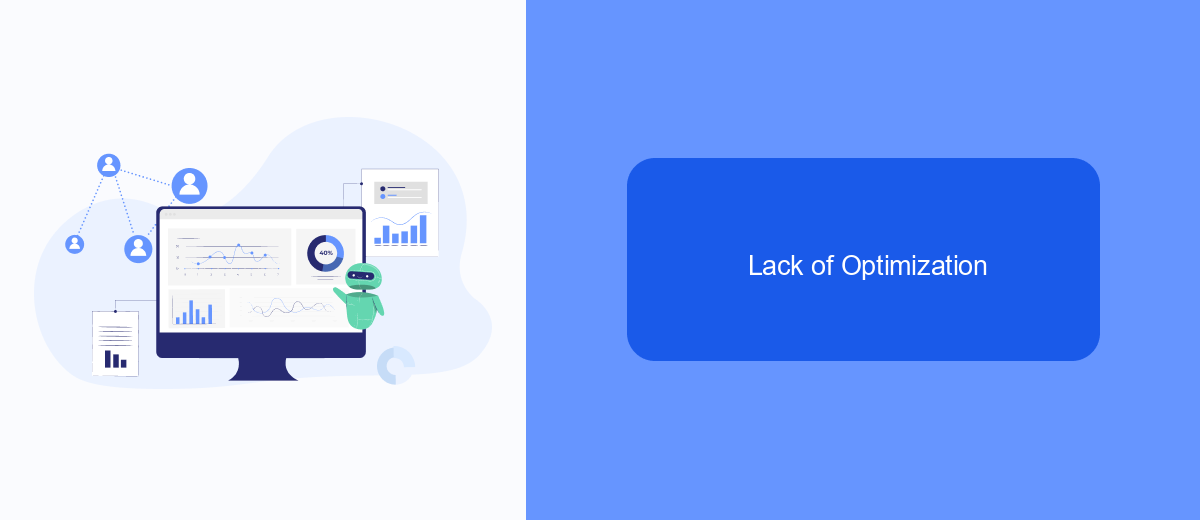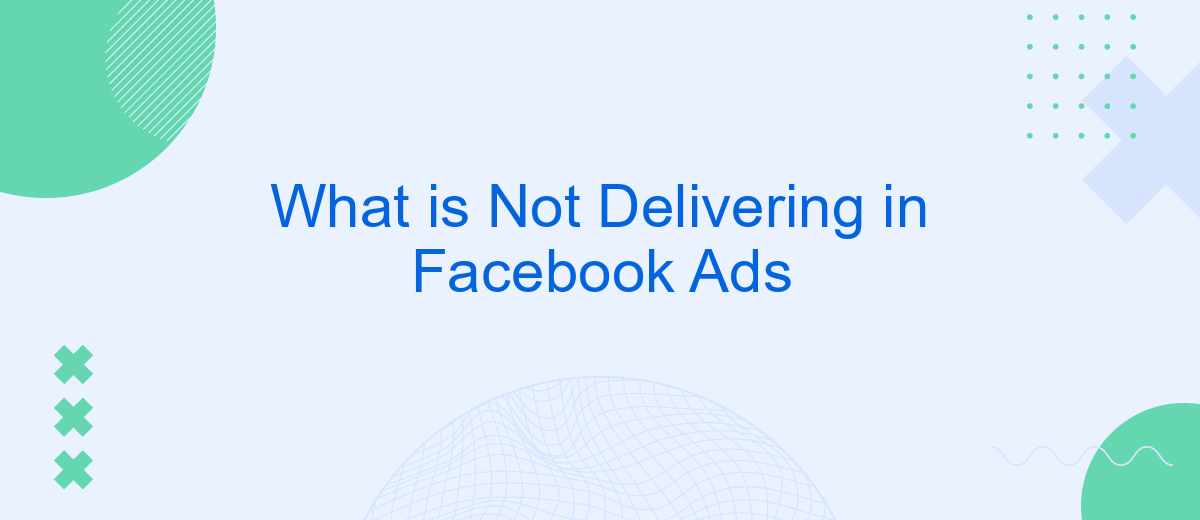In today's digital marketing landscape, Facebook Ads have become a crucial tool for businesses aiming to reach their target audience. However, not all campaigns deliver the expected results. This article delves into the common pitfalls and challenges that marketers face when their Facebook Ads fail to perform, offering insights and strategies to enhance ad effectiveness and return on investment.
Missing Tracking
One of the critical reasons your Facebook ads may not be delivering is missing tracking. Proper tracking ensures that you can measure the performance of your ads and optimize them for better results. Without it, you're essentially flying blind, unable to gauge the effectiveness of your campaigns.
- Ensure your Facebook Pixel is correctly installed and functioning.
- Verify that conversion events are set up and tracked accurately.
- Integrate third-party tools like SaveMyLeads to automate and streamline your tracking processes.
- Regularly audit your tracking setup to catch any discrepancies early.
By leveraging tools like SaveMyLeads, you can simplify the integration of various data sources and ensure that your tracking is comprehensive and accurate. This not only saves time but also provides you with actionable insights to refine your ad strategies.
Not Enough Creatives

One common issue with Facebook Ads not delivering effectively is the lack of sufficient creatives. When advertisers use the same set of creatives repeatedly, audiences can experience ad fatigue, leading to decreased engagement and performance. Diverse and fresh creatives are essential to capture the attention of different audience segments. By regularly updating and testing new visuals, copy, and formats, advertisers can maintain audience interest and improve ad performance.
To streamline the process of managing and updating creatives, integrating tools like SaveMyLeads can be incredibly beneficial. SaveMyLeads allows for seamless integration with various platforms, automating the flow of data and reducing manual efforts. This ensures that your creative assets are always current and relevant, making it easier to test and deploy new ad variations. By leveraging such tools, advertisers can focus more on crafting compelling creatives and less on the logistics of their deployment.
Ineffective Targeting

One of the most common issues with Facebook Ads is ineffective targeting, which can lead to wasted budget and poor campaign performance. When your ads are not reaching the right audience, it becomes challenging to achieve your desired outcomes. Here are some key reasons why targeting may be ineffective:
- Broad Audience: Targeting too broad an audience can dilute your message and reduce ad relevance.
- Wrong Demographics: Incorrectly setting up demographic filters can lead to reaching an uninterested audience.
- Ignoring Interests: Not leveraging user interests and behaviors can result in low engagement rates.
- Geographic Mismatch: Targeting regions where your product or service is not available can waste ad spend.
- Overlapping Audiences: Overlapping audience segments can cause your ads to compete against each other, driving up costs.
To address these issues, consider using advanced tools like SaveMyLeads to fine-tune your audience targeting. SaveMyLeads integrates seamlessly with Facebook Ads, allowing you to automate and optimize your targeting parameters based on real-time data. By refining your audience, you can ensure your ads are delivered to those most likely to convert, maximizing your return on investment.
Lack of Optimization

One of the primary reasons your Facebook ads might not be delivering is a lack of optimization. Without proper optimization, your ads won't reach the right audience, and your ad spend won't be used efficiently. This can lead to poor performance and wasted resources.
Optimization involves several key factors, such as targeting the right demographics, using compelling creatives, and setting appropriate budgets. It's also crucial to continually monitor and adjust your campaigns based on performance data.
- Targeting the right audience segments
- Using high-quality images and videos
- Setting realistic and flexible budgets
- Regularly analyzing performance metrics
To streamline the optimization process, consider using integration services like SaveMyLeads. This platform helps automate the transfer of leads from Facebook Ads to your CRM or email marketing tools, ensuring that you can quickly act on new leads and adjust your campaigns in real-time based on the latest data.
Measurable Results
Measuring the effectiveness of your Facebook Ads is crucial to understanding what’s working and what’s not. Utilizing tools like Facebook Ads Manager, you can track key performance indicators (KPIs) such as click-through rates (CTR), conversion rates, and return on ad spend (ROAS). These metrics provide valuable insights into the performance of your ads, allowing you to make data-driven decisions to optimize your campaigns. However, sometimes the built-in tools may not cover all your needs, especially when it comes to integrating data from multiple sources.
This is where services like SaveMyLeads come into play. SaveMyLeads allows you to automate the integration of Facebook lead ads with various CRM systems, email marketing tools, and other platforms. By setting up these integrations, you can ensure that your lead data is seamlessly transferred and utilized across your marketing stack. This not only saves time but also enhances the accuracy of your reporting, making it easier to measure and analyze the true impact of your Facebook Ads campaigns.


FAQ
What does "Not Delivering" mean in Facebook Ads?
Why is my Facebook ad not delivering?
How can I fix Facebook ads that are not delivering?
Can audience overlap cause my Facebook ads to stop delivering?
What should I do if my Facebook ad is disapproved?
What do you do with the data you get from Facebook lead forms? Do you send them to the manager, add them to mailing services, transfer them to the CRM system, use them to implement feedback? Automate all of these processes with the SaveMyLeads online connector. Create integrations so that new Facebook leads are automatically transferred to instant messengers, mailing services, task managers and other tools. Save yourself and your company's employees from routine work.
